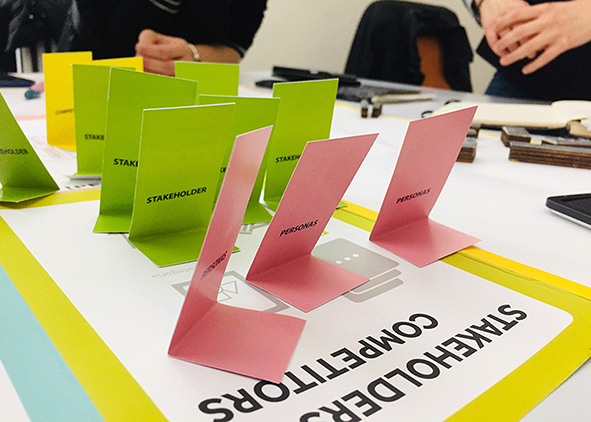Hardesign vs Softdesign
DOI:
https://doi.org/10.19229/2464-9309/5162019Keywords:
service design, social innovation, co-design, design as a process, product-serviceAbstract
Our thought on innovation starts from the dichotomy between the strong and the light design’s components: on the one hand opposed, on the other complementary. Hard is the process based on the consumerist model, Soft is more sustainable. Hard is the dimension of possession, Soft is that of access and sharing. Hard is the top-down process and Soft is the bottom-up process that values social innovation. The project tools are not records to be applied. They must adapt, be customized to the needs expressed by the people who are activating themselves in the structuring of answers. The role of designers today is to face our time challenges, to which the models used in the last century are unable to respond. It is to answer to the world’s change by performing the change in the project.
Downloads
Article Metrics Graph
References
Albinsson, L., Lind, M. and Forsgren, O. (2007), “Co-design: an approach to border crossing, network innovation”, in Cunningham, P. and Cunningham, M. (eds), Expanding the Knowledge Economy – Issues, Applications, Case Studies, vol. 4, part 1, IOS Press, Amsterdam, pp. 977-983.
Anceschi, G. (ed.) (1993), Il progetto delle interfacce – Oggetti colloquiali e protesi virtuali, Domus Academy, Milano.
Bonsiepe, G. (1995), Dall’oggetto all’interfaccia – Mutazioni del design, Feltrinelli, Milano.
Brandt, E. (2006), “Designing Exploratory Design Games: A framework for Participation in Participatory Design?”, in Jacucci G. and Kensing, F. (eds), PDC ‘06 | Proceedings of the ninth conference on Participatory Design – Expanding boundaries in design, Trento 01-05 August 2006, vol. 1, ACM Press, New York, pp. 57-66. [Online] www.ida.liu.se/divisions/hcs/ixs/material/servicedesignGbg10/2%20Additional%20 readings/designGames.pdf [Accessed 3 April 2019].
Celaschi, F. (2000), Il design della forma-merce, Il sole24ore, Milano.
Cinquini, L., Di Minin, A. and Varaldo, R. (2011), Nuovi modelli di business e creazione di valore – La Scienza dei Servizi, Springer, New York.
Cristallo, V. (2015), “La crisi del prodotto nel design del prodotto”, in. Op. Cit., n. 152, pp. 25-37. [Online] Available at: e.issuu.com/embed.html#13706082/11478868 [Accessed 3 March 2019].
Lombardi, M. (2018), Cos’è la digital servitisation e come sta cambiando l’economia. [Online] Available at: www.agendadigitale.eu/industry-4-0/cose-la-digital-servitization-e-come-sta-cambiando-leconomia/ [Accessed 7 April 2019].
Maldonado, T. (2011; I ed. 1976), Disegno Industriale un riesame, Feltrinelli, Milano.
Mancini, M. (2017), “Fattori di innovazione per il design, individuazione dei grip factor”, in G. Lotti, G. and Tosi, F. (eds), La ricerca di Design nelle tesi di dottorato dell’Università di Firenze, didapress, Firenze, pp. 167-195.
Manzini, E. (2018), Politiche del quotidiano, Edizioni Comunità, Roma.
Manzini, E. (2015), Design, when everybody designs, MIT Press, Cambridge.
Manzini, E. (2010), “Small, local, open and connected – Design research Topics in the Age of Networks and Sustainability”, in Journal of Design Strategies, vol. 4, n. 1, pp. 8-11.
Murray, R., Caulier-Grice, J. and Mulgan, G. (2013), Il libro bianco dell’innovazione sociale [orig. ed. The Open Book of Social Innovation, 2010], The Young Foundation, Londra.
Pasca, V. (2010), “Il Design nel futuro”, in Treccani XXI secolo. [Online] Available at: www.treccani.it/enciclopedia/il-design-nel-futuro_%28XXI-Secolo%29/ [Accessed 3 April 2019].
Penin, L. (2018), An Introduction to Service Design – Designing the Invisible, Bloomsbury Visual Art.
Perniola, M. (2004), Contro la Comunicazione, Einaudi, Torino.
Rawsthorn, A. (2018), Design as an Attitude, JRP Ringier, Zurich.
Rifkin, J. (2001), The Age of Access – The New Culture of Hypercapitalism Where All of Life is a Paid-For Experience, Tarcher/Putnam, New York.
Sanders, E. B. N. and Stappers, P. J. (2008), “Co-creation and the new landscape of Design”, in CoDesign, vol. 4, issue 1, pp. 5-18.
Scrivener, S. (2008), “Editorial”, in CoDesign, vol. 4, issue 3, pp. 131-132.
Vendrell-Herrero, F., Bustinza, O., Parry, G. and Georgantzis, N. (2017), “Servitization, digitization and supply chain interdependency”, in Industrial Marketing Management, vol. 60, pp. 69-81.
Verona, G. (2018), “Innovazioni”, in Wired | Le parole del 2019, n. 87, p. 144.
Vogler, C. (1992), Il viaggio dell’eroe [orig. ed. The Writer’s Journey – Mythic Structure for Writers, 1992], Dino Audino, Roma.
Zannoni, M. (2018), Progetto e interazione – Il design degli ecosistemi interattivi, Quodlibet, Macerata.

Downloads
Published
How to Cite
Issue
Section
License
This Journal is published under Creative Commons Attribution Licence 4.0 (CC-BY).
License scheme | Legal code
This License allows anyone to:
Share: copy and redistribute the material in any medium or format.
Adapt: remix, transform, and build upon the material for any purpose, even commercially.
Under the following terms
Attribution: Users must give appropriate credit, provide a link to the license, and indicate if changes were made; users may do so in any reasonable manner, but not in any way that suggests the licensor endorses them or their use.
No additional restrictions: Users may not apply legal terms or technological measures that legally restrict others from doing anything the license permits.
Notices
Users do not have to comply with the license for elements of the material in the public domain or where your use is permitted by an applicable exception or limitation.
No warranties are given. The license may not give users all of the permissions necessary for their intended use. For example, other rights such as publicity, privacy, or moral rights may limit how you use the material.


















































































